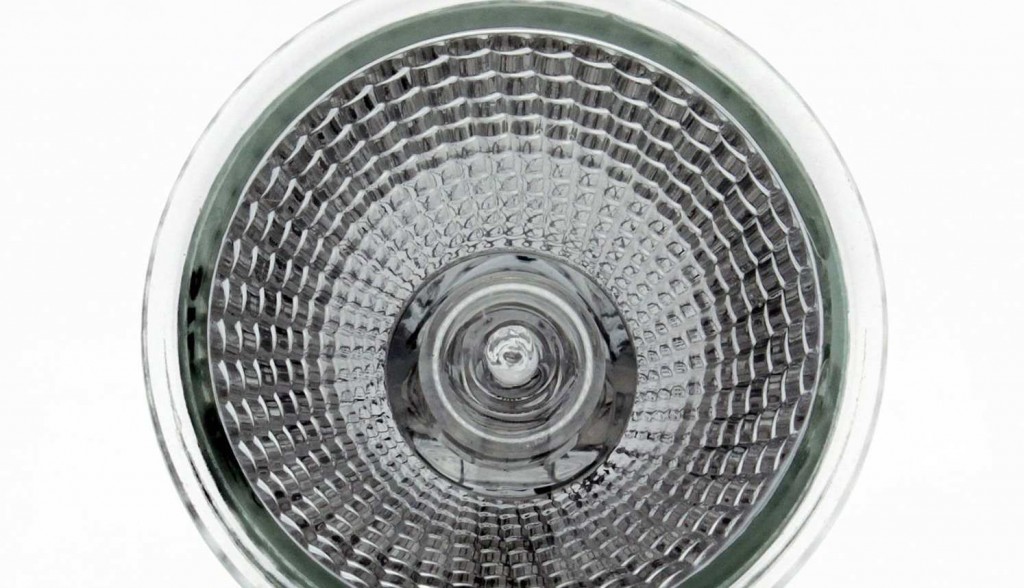TAG | energy efficient lighting
9
Will Tunable Street Light Breakthrough Silence LED Critics?
Comments off · Posted by admin in LED
Will tunable street light breakthrough silence LED critics? PLUS: Smart street lights tell cities when to salt frozen roads. AND: LED protest signs take centre stage at demonstrations. Lux Today 7 February 2017.
energy efficient lighting · led lighting · lux today · Novel Energy Lighting · smart street lights · tunable street lights
Pioneering smart-lighting revolutionises European city. PLUS: President Obama gives Detroit an LED parting gift. AND: Australia launches free LED luminaire scheme. Lux 31 January 2017
detroit lighting · energy efficient lighting · led street lighting · Novel Energy Lighting · smart lighting · smart phone lighting
16
GDP due to lighting ‘must fall to tackle climate change’
Comments off · Posted by admin in LED
 |
| Former Friends of the Earth chief Jonathan Porritt says we must accept a reduction of the historic proportion of GDP attributable to lighting and its associated energy requirements if we are to have an impact on greenhouse gas emissions. |
Delivering the inaugural annual lecture of the Worshipful Company of Lightmongers, he said: ‘We need to find ways of delivering increasingly sophisticated lighting services to the whole of humankind…in ways that cause considerably less impact, which probably needs less total economic activity.
‘Lighting is responsible for anywhere between 16 and 18 per cent of total electricity consumption in the world today, depending on how you do the calculations. So this is an absolutely massive part of the challenge. And although it’s rarely spoken about in those terms, people are beginning to understand that if we are going to make a difference to this story, we have to make a difference on lighting.’
Referring to the barrage of criticism from campaigners over the UK Government’s decision to approve a third runway at Heathrow Airport in London, he pointed out that aviation is responsible for 2 and 4 per cent of total global greenhouse gas emissions.
‘It’s relatively small in fact. When you compare lighting to these other big sectors, you can begin to see why it is people are focusing suddenly on the need to get lighting right.
‘What we know is that if you back right back before electricity to when people were using whale oil and tallow and candles, the contribution of the lighting industry as a whole has remained astonishingly constant over hundreds of years. It always contributes around 1.7 per cent of total GDP in any one year.
‘This rather amazing statistic was unearthed by Professor [Jeff] Tsao in the paper he wrote in 2010. And I quote: “New applications of increasingly efficient lighting technologies have consistently offset the energy efficiency gains from new lighting technologies almost exactly, leaving the portion proportion of global GDP attributable to lighting essentially unchanged for hundreds of years”.
‘So lighting’s always had this critical part in the economy of human societies at different points, at roughly 1.7 per cent of GDP.
’The problem is, we need to do something about that,’ he told a London audience of lighting executives. ‘I hope this isn’t going to upset people here but we kind of need to get that figure down. Because if we are to have a massive contribution from lighting to addressing this problem, we need to find ways of delivering increasingly sophisticated lighting services to the whole of humankind – not just the rich world – in ways that cause considerably less impact, which probably needs less total economic activity.’
However, he praised the lighting sector for its technological achievements, especially the development of the blue LED by Professor Shuji Nakamura and his team in the 1990s. Quoting the US Department of Energy, he said: ‘ “the widespread introduction of LEDs today will reduce electricity consumption by around 348 TWh by 2027, equal to the output of 44 large power plants, saving more that $30 billion at today’s power prices”. So you can see why this is going to have an impact on GDP. It takes $30 billion of economic activity out of the US economy, that translates through into the economic multipliers.
‘If the Indian government were to replicate the LED roll-out that it is currently undertaking in Pondicherry, it would reduce electricity demand by over 50 TWh and cut consumer bills by over $3 billion. These are just massive changes that are underway now.’
He also highlighted the president of Institute of Physics’ claim that the optimum use of LED lighting could reduce lighting’s share of the global electricity consumption in buildings from 19 per cent to 4 per cent. ‘That translates to the total electricity consumption of Europe.’
electricity demand reduction · energy efficient lighting · gdp · led GU10 · LED lamps · led lighting · led tubes · Novel Energy Lighting · power saving
3
Thorn Retrofit at Bracknell Forest Council Offices
Comments off · Posted by admin in LED, LED panels
The Time Square office building in Bracknell is home to Bracknell Forest Council. The building is typical of many UK office blocks and required a complete refurbishment, including a lighting upgrade.
The old lighting comprised 1x58W switchstart luminaires with cat 2 louvres arranged in rows within a metal plank ceiling across the office space. The luminaire design combined with old technology meant the ceiling and walls appeared very dark, creating a gloomy effect below the optimum lighting specification for offices.
Two schemes were put forward for consideration: 1x55W TC-L with high frequency dimmable
control gear and 1x42W LED with dimmable gear. The latter scheme was chosen with the contemporary recessed Quattro LED luminaire because it offered maximum energy savings. In comparison to the existing 1x58W switchstart luminaire, Quattro LED offered a 37% energy saving on connected load. Significantly, over a 12-year period, Quattro LED also offered an energy and maintenance saving of £45,543 compared to the fluorescent alternative.
Lighting controls further increase energy savings
Part of the upgrade also included the installation of daylight and presence lighting controls using Sensa Link to ensure the lighting uses the minimum amount of energy required to meet the new design specification. The new lighting levels have been designed to achieve 450 lux on the working plane with sensors programmed to dim the lights in groups according to daylight and occupancy. With the inclusion of lighting controls, lighting is only used when required, increasing the energy savings over and above the 37% achieved by upgrading to LED.
Comfortable lighting fit for the environment
The office lighting has been brought up to the latest lighting standards to support the wide variety of
office-based tasks. With excellent colour rendition and superb light quality, the Quattro LED luminaires have transformed the working environment into a bright, vibrant space. The office is now a comfortable place to work, facilitating everyday tasks such as reading, writing and working with a computer screen, as well as clear communication between people As well as the lighting technology upgrade, the office has also been redecorated. This has increased the reflected light within the space and in turn creates further energy savings.
As part of the refurbishment, the emergency lighting has also been upgraded to LED using the Thorn Voyager LED series range. The addition of Explorer emergency lighting controls give a central emergency testing facility across the building.
Controls used
Sensa Link controls
Explorer emergency controls
Key Facts
Energy consumption reduced by 37%
450 lux
Colour rendition: Ra80
Visit www.novelenergylighting.com to explore our range of Thorn LED Lighting, or call us to discuss project specification and pricing.
T: 0208-540-8287
E: sales@novelenergylighting.com
energy efficient lighting · led lighting controls · Novel Energy Lighting · office led · office lighting · sensa link · thorn led · thorn lighting · thorn quattro led · thorn voyager led · tube retrofit
15
A fresh look for a famous franchise
Comments off · Posted by admin in LED, LED panels, LED Spots, LED Tubes
Customer challenge
The right lighting
co2 reduction · energy efficient lighting · led lighting · led tubes · maxos led · Novel Energy Lighting · philips led · philips led tubes · philips lighting · philips maxos · supermarket lighting
Royal Mail Group has reduced its energy demands by 11GWh per annum by replacing lighting with LED lamps and additional controls across 16 mail centres within the UK. The replacement programme converted 200,000 m2 of operational floor space and saw the removal of approximately 20,000 fluorescent lamps. The financial payback period was 2.5 years.
The LED lighting replacement programme represents a significant commitment by Royal Mail Group to reduce energy usage throughout its portfolio. In addition to the 11GWh annual energy saving, further substantial benefits include a reduced maintenance liability by the removal of fluorescent lamps.
Royal Mail worked closely with the contractors and supply chain to optimise a programme designed to have zero impact on mail centre operations in terms of mail throughput and disruption. Royal Mail Group Property engaged with its internal ‘Environment Pillars’ and operations teams to assist with the coordination of the installation programme to ensure good practice and optimise savings.
The programme also incorporated the installation of daylight dimmable lighting controls on several projects together with PIR sensors to maximise energy savings and harness natural daylight. This has proven extremely effective and ensured additional energy savings have been generated.
The Royal Mail Group also integrated measurement and verification (M&V) in accordance with the International Measurement & Verification Protocol (IPMVP) at each site undergoing LED replacement. The M&V was undertaken by independent IPMVP-certified consultants. This provided a robust verification process, delivering evidence that targeted energy savings were being achieved and giving confidence for future deployment of LED low energy lighting schemes.
For more on this project, don’t miss LuxLive, where John Bradshaw, engineering and technical services manager at Royal Mail, will talk delegates through the rollout of LEDs and controls to the 16 UK mail centres
The project is shortlisted for the Lux Awards, also on Thursday 19 November.
energy efficient lighting · energy savings · LED lamps · led lighting · Novel Energy Lighting · royal mail led
21
How hospital lighting can help patients and save energy
Comments off · Posted by admin in LED
A panel of NHS facilities and energy managers and lighting professionals come together to discuss how lighting in hospitals can be tackled to improve patient outcomes and save energy

- What are the real benefits of investing in new lighting technology for healthcare?
- What are the key mistakes to avoid when upgrading lighting?
- What’s the latest knowledge on how lighting influences patient outcomes?
- How can we make healthier lighting a reality in healthcare facilities?
- How can healthcare bodies get funding for lighting upgrades?
There also needs to be better guidance on what works and what doesn’t and what is considered best practice. This would help me to convince people further up the chain and get funding”Damian Oatway
aurora led · energy efficient lighting · hospital led · hospital lighting · led lighting · Novel Energy Lighting
6
Philips chief in passionate plea: ‘What are we waiting for?’
Comments off · Posted by admin in LED, Philips LED
Published on 29 Sep 2015
Philips Lighting chief Eric Rondolat has called on international business leaders to act on climate change by embracing new lighting technologies. PLUS: Internet of Things is theme of this year’s LuxLive show in London. Lux Today 29 September 2015 presented by Courtney Ferguson.
energy efficient lighting · led GU10 · LED lamps · led lighting · LED retrofit · led tubes · Novel Energy Lighting · philips led · philips lighting
6
EC upholds decision to ban mains-voltage directional halogens
Comments off · Posted by admin in LED, LED GU10, LED MR16 lamps
The European Commission has stuck with its decision to phase out mains-voltage halogen directional lamps from the European market in September 2016 following a review. The move has been described as a win for consumers and the environment by industry figures.
“Earlier this year we saw an EU vote delaying the phase out of non-directional halogen lamps until 2018 and this threw into question which way the balance would swing for their mains-voltage directional cousins,” commented Fred Bass, managing director of Neonlite International, owner of Megaman. “However, common sense has ruled and these highly inefficient light sources will now be phased out within a year.”
As part of the review of the lighting directive EC 1194/2012, four criteria needed to be assessed before a phase-out could be confirmed. Issues of affordability were under scrutiny, as well performance, equivalence to existing models and compatibility. The EU has confirmed that there is no reason to delay the ban on mains voltage directional halogen lamps, as all these areas have been sufficiently met.
“This ruling brings us one step closer to the eventual removal of all high-energy consuming halogens and can only be a positive move for both consumers and the environment alike,” Bass told Lux. “I stand by what I said when commenting on the delay in banning non-directional halogens earlier in the year, I truly believe that market forces will begin to take over in Europe and LEDs will win through, no matter when all halogens are eventually banned. High quality LED lamps are out there already, they do save money and energy and consumers will begin to convert to them more and more as they realise the benefits.”
Retrofit your premises with LED lighting today. Visit www.novelenergylighting.com to review our range of LED GU10 and LED MR16 lamps amongst other types. Call us to discuss volume orders: Tel: 0208-540-8287
energy efficient lighting · halogen ban · halogen lamps · led GU10 · led lighting · led mr16 · Novel Energy Lighting
Lux Reports: The latest report from UK shopping centres body BCSC and property advisor CBRE has added weight to the argument that LED lighting has become crucial to energy efficiency improvements and the valuation of malls.
Making malls energy efficient adds five per cent to their value“British Council of Shopping Centres
The report on the environment and rationale for sustainability has taken a deliberately financial stance on enhancing the value of shopping centres and estimated that making malls energy efficient adds five per cent to their value.
BCSC president and chief executive of UK property investor Hammerson, David Atkins, said: ‘In the past reports have tended to be either very theoretical or very technical. This is one of the first attempts to present the arguments in a straightforward and logical way to those who may be making or advising on sustainability strategies and to put numbers on the topic.’
He added: ‘There is no doubt that the potential upside of investment per pound is highest among those schemes which may have adopted more of a “sticking plaster” approach to maintenance and replacing equipment in the past.’
Rebecca Pearce, EMEA head of sustainability at CBRE, who authored the report, said it is an attempt to persuade sceptics and, analysing 35 centres across the spectrum of malls, the report has sought to provide evidence that it is something any landlord can achieve.
The single most positive thing that could be done to improve energy efficiency in shopping centres is undoubtedly the installation of LED lighting”Heino Vink, Multi Corporation
‘The crux of the report is to show that sustainability is worth investing in,’ she said. ‘The most obvious is replacing existing lighting with LED lighting and really we are beyond the time to justify this and to the point of saying ‘just get on and do this guys’.’
Heino Vink, COO of Dutch-based shopping centre giant Multi Corporation, has also backed LED lighting replacement and, speaking at an International Council of Shopping Centres event in London last month, said: ‘Looking at the single most positive thing that could be done to improve energy efficiency in shopping centres, it is undoubtedly the installation of LED lighting.’
Davinder Jhamat, head of research and education at BCSC, said that the breadth of shopping centres reviewed showed that the biggest gains may be in those older, secondary schemes which lacked investment during the austerity years. ‘The case for LED lighting is very well proven. How difficult is it, after all, to change a light bulb? We’re not talking about the lifts or major HVAC changes. But this is also not just about the corporate level, it needs to be embedded.’
Contact Novel Energy Lighting today to discuss your retail premises lighting retrofit. Tel: 0208-540-8287,sales@novelenergylighting.com
energy efficient lighting · led lighting · mall lighting · Novel Energy Lighting · retail led · retail lighting · shopping mall led · shopping mall lighting




